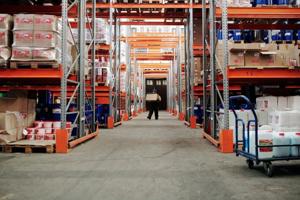
Organized retail crime has become an issue for retailers nationwide, with stores such as Target saying they are closing storefronts due to theft losses and for safety precautions.
The National Retail Federation reported that more retailers in America felt organized retail crime was a higher priority in 2023 (78.1%) compared to 2022 (70.7%).
In addition, shoplifting statistics show that 88% of retailers say that shoplifters are at least somewhat more aggressive and violent compared to one year ago.
Forbes Advisor delved into retail theft statistics to find out what states are being most affected by retail theft overall. They also surveyed American small business owners with brick-and-mortar stores that employ up to 50 employees to find out how retail theft is affecting small businesses.
The survey reveals that the vast majority of small business retailers nationwide have experienced theft at their stores (90%) and 83% said they believe retail theft is at least a somewhat major issue.
Washington ranks as the state the most impacted by retail crime, and Wyoming is the state the least impacted.
The state with the highest average total value of stolen goods per capita is Pennsylvania, where the total value of stolen goods is $430 per capita.
Eighty-five percent of small business retailers said they experience theft at least once a year, and just 5% of small business retailers report never experiencing theft.
The majority of small business retailers with a brick-and-mortar shop (52%) said the frequency of theft in 2023 increased or stayed the same compared to previous years.
Three of the five states that are the least impacted by retail crime are located in the South, namely Mississippi, Georgia and Alabama.
The majority of small business retailers (79%) said their monthly losses from theft were between $500 and $2,500, and 10% said theft losses accounted for more than $2,500.
The majority of small business retailers (56%) anticipate that their business will be affected by theft during the upcoming holiday season.
To make up for losses due to theft, most retail small business owners have increased prices (64%) and/or installed security cameras (50%).
Opening a small business is a tough endeavor in itself, and dealing with the repercussions of theft can make the job even more difficult. The survey results show that the majority of small business retailers in America experience theft (both internally from employees and externally from customers), and most experience it at least on a monthly basis (75%).
The effects of theft on small businesses in the U.S.
Forty-one percent of small business retailers said the value of items stolen in 2023 has increased compared to previous years.
Seventy-five percent of small business retailers reported monthly losses between $500 and $2,500 due to theft.
The majority of business owners say that they would file a theft claim with their insurance (56%) and report it to authorities (53%) after an incident.
Theft mitigation is common amongst small business retailers, with 98% saying they’ve put measures in place to prevent it.
Eighty-three percent of respondents believe theft is at least a somewhat major issue for small business retailer owners.
The National Retail Federation reported that retailers in America saw increases in e-commerce fraud and phone scams, to solicit gift cards or cash, in the last year.
How can small business owners prevent theft?
Theft by customers and employees can be a major blow to your bottom line. Consider these ways to reduce retail theft.
Implement Access Control Measures
Access control measures are not just for large retailers. They can also help protect small retailers from theft losses:
Install an electronic access control system for restricted areas, such as stockrooms. With these systems you’ll assign unique access codes or keycards to each employee to make it easy to track who enters these areas. This by itself could be a deterrent to employee theft.
Use Hidden Cameras Strategically
Cameras are a useful theft deterrent. A combination of visible and hidden surveillance cameras can make a big difference in what you can track at your store. Hidden cameras can capture thieves who are aware of the more obvious cameras. Strategically place both visible and hidden cameras throughout your store to maximize theft deterrence. Cameras are also a good way to gather evidence of theft for the police and for small business insurance theft claims.
Use Data Analytics
If you have enough data you can track unusual patterns in your sales and inventory. Consider a system that alerts you to unusual sales trends, odd transactions and inventory discrepancies. This can help you quickly detect theft and possibly identify ways to prevent it.
Train Employees on Loss Prevention
Empower employees to become part of your loss prevention strategy. Provide training on how to identify and handle potential theft situations discreetly. Encourage employees to be vigilant without dramatically confronting customers.
Rethink Store Layout
An efficient store layout can play a role in reducing theft. Consider an open, well-lit store design with clear sightlines from employees to customers. This will make it easier for employees to monitor the sales floor and can deter potential thieves looking for hidden corners.
Editorial Note: This story was originally published on Forbes Advisor.

